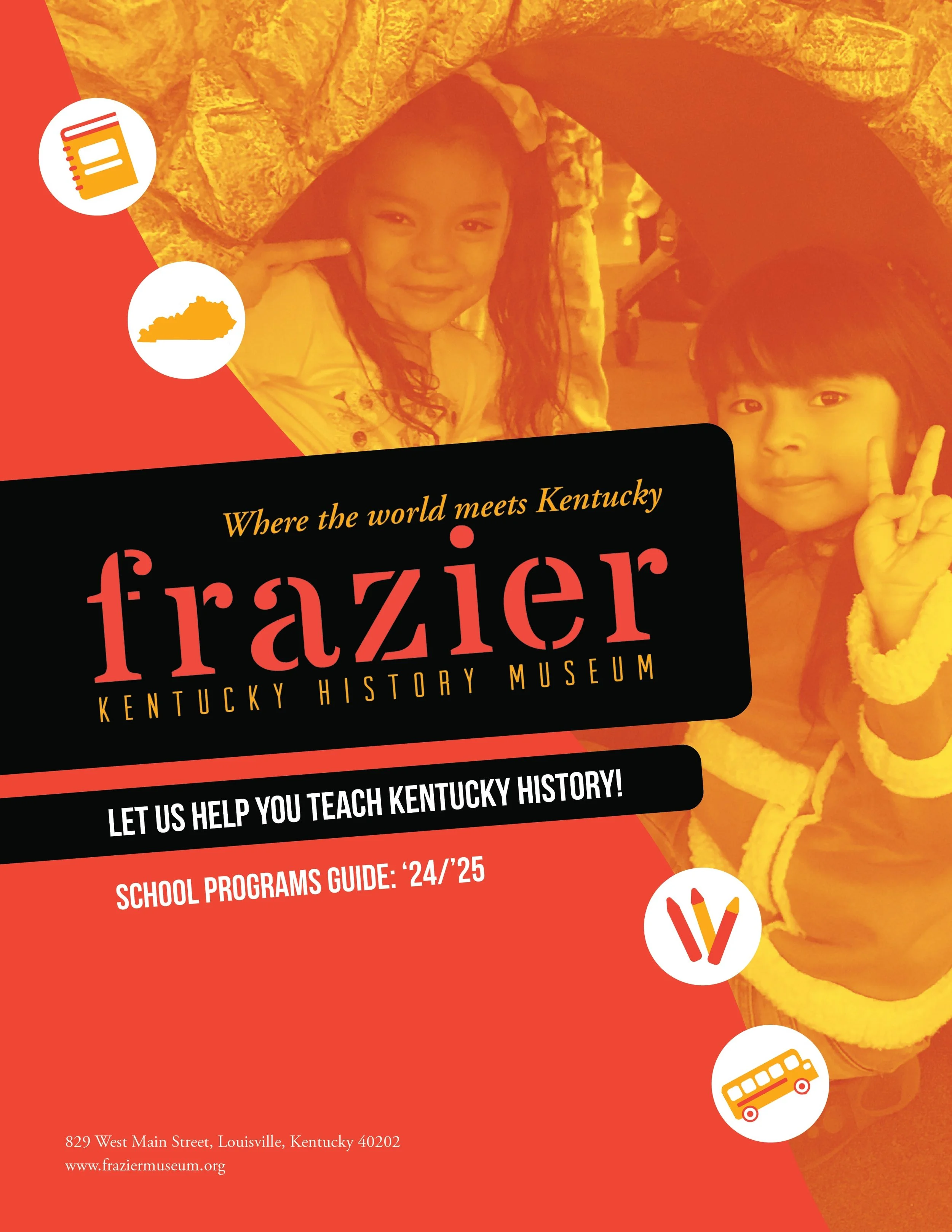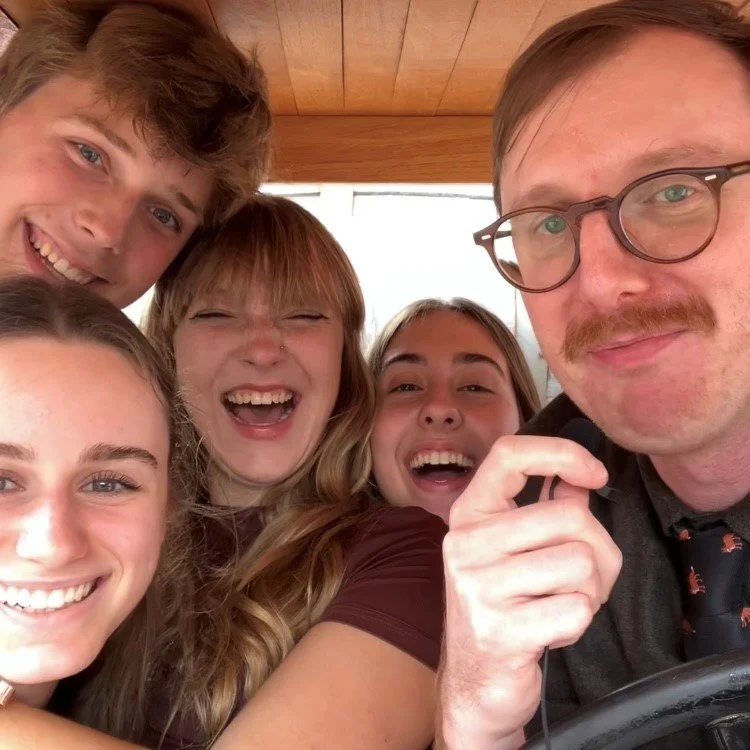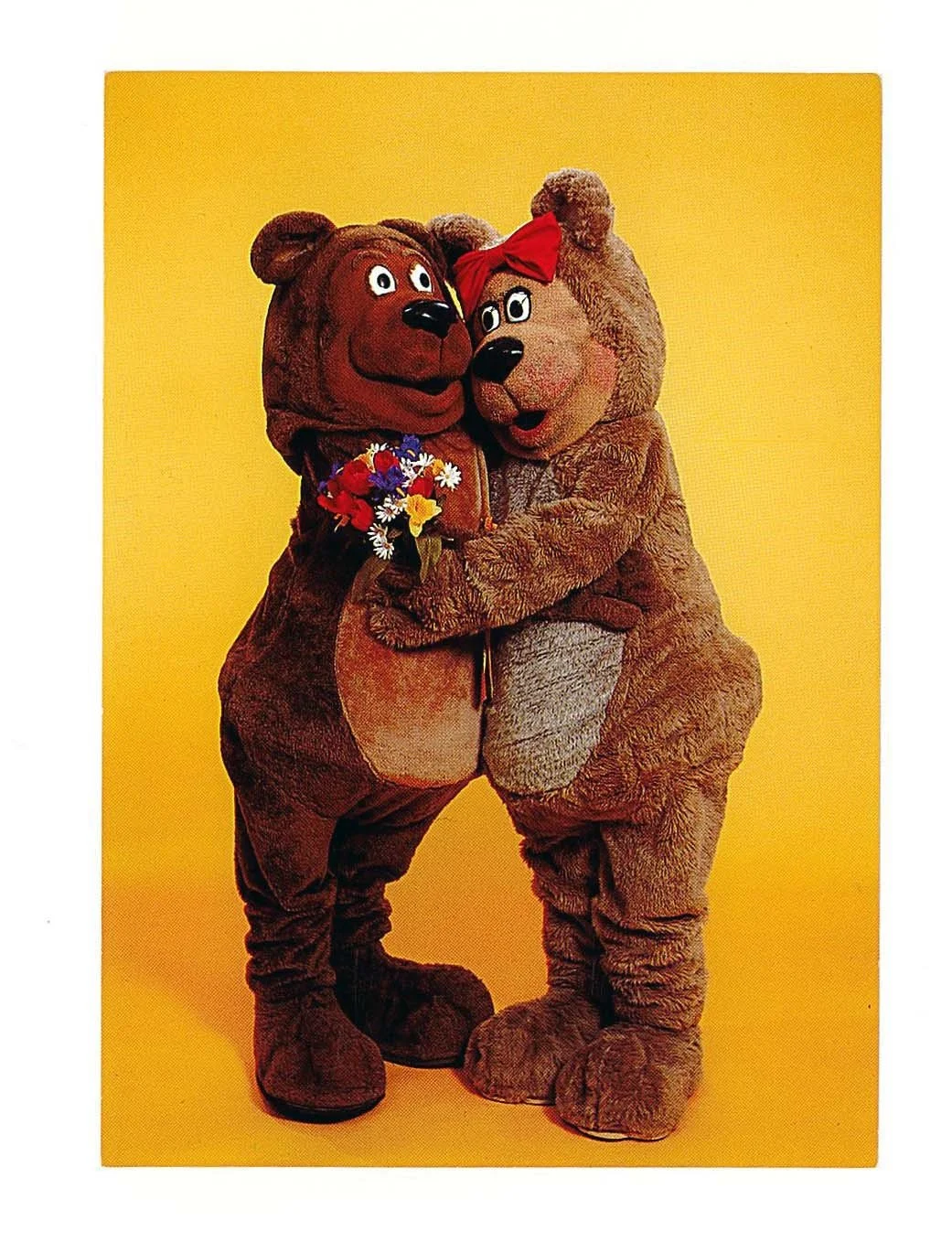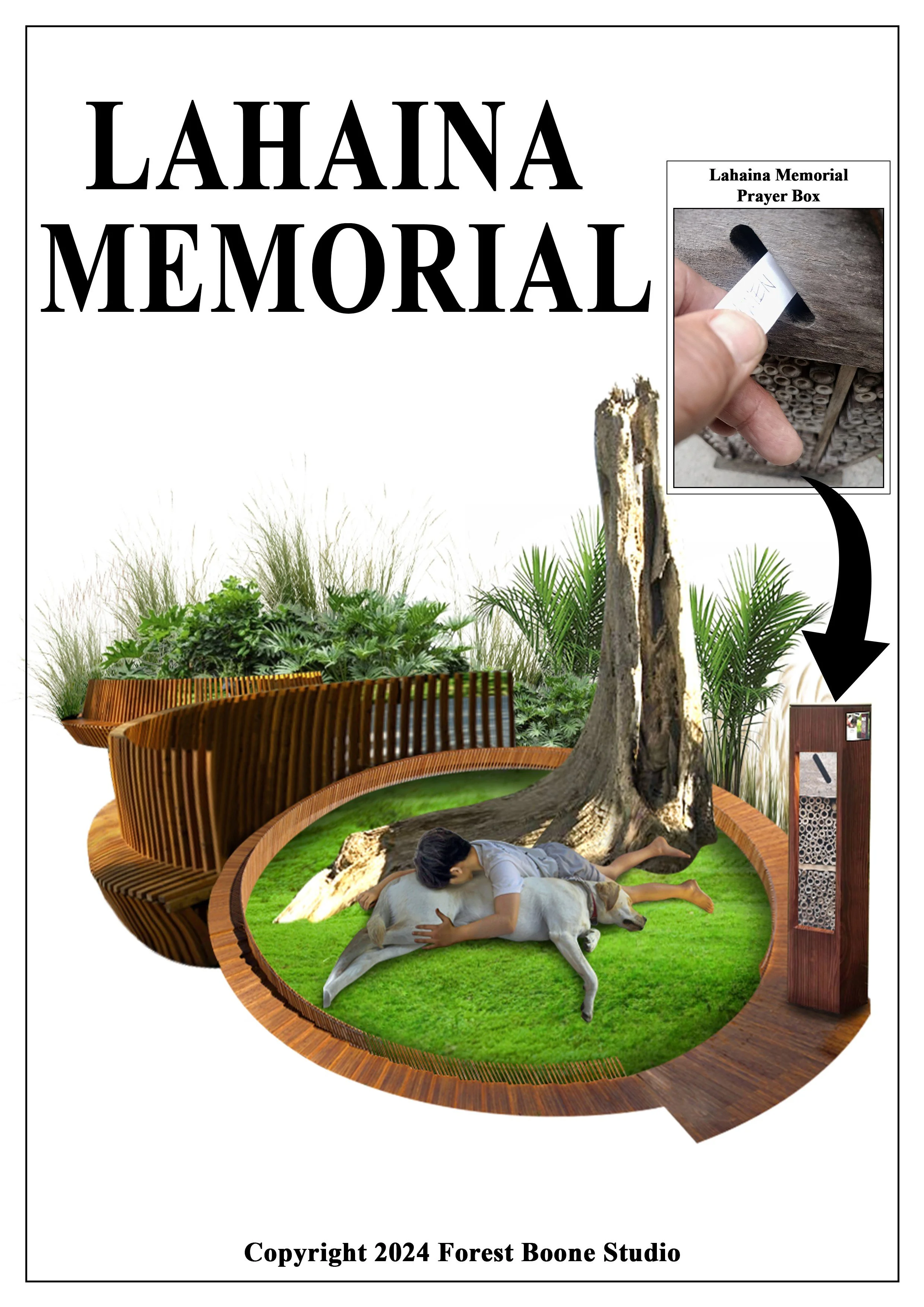2024–25 School Programs Guide, Fairbear & Fairabear, Olympic Fencer Lee Kiefer’s Grandmother, and More
It’s quiet this week in the Frazier Museum education center, but don’t let that fact fool you. Camps wrapped up two weeks ago, summer field trips have wound down, and it will be a few weeks before the school year visits begin in earnest. But even without the sounds of daily morning set up and the chitter chatter of excited, young voices—hard work is happening!
The Frazier education team is committed to being a learning hub for students and teachers throughout the state. That might take place here at the museum through one of our eleven guided field trip options, teacher retreats, or professional developments sessions. Or it might take place off site with a virtual visit, a hands-on travel kit, or an inquiry lesson utilizing museum resources. We are spending this brief window of calm working hard to prepare new offerings and hone existing ones, with the goal of making sure we’re a valuable resource once the teachers are ready.
New this year, we have a visit offered in alignment with our Flashback: Louisville Media Through the Years exhibition, a Lights on Main Winterfest field trip option, a Winterfest Homeschool Day on December 12, teacher retreats, and more.
We also hit solid gold this summer in the form of a marketing intern named Emerson Hardin. He designed a fantastic School Programs Guide that gathers all relevant information in one place, making it easy for educators to explore all we have to offer. We’re beyond excited to debut the guide today. Be one of the very first people to check it out here!
As always, any additional questions may be directed to education@fraziermuseum.org.
In today’s Frazier Weekly, we’ve got a summer camp wrap-up, a harbinger of the end of summer with Fairbear, a feature on how video gamers are learning about Kentucky thanks to Project Zomboid, and the grandmother of a Kentucky gold medalist shines bright!
Megan Schanie
Sr. Manager of Educational Programs
Frazier History Museum
This Week in the Museum
Frazier’s 2024 Summer Camps were a Huge Success!
Summer campers pose on the Frazier’s rooftop, July 18, 2024. Credit: Frazier History Museum.
Summer campers stage Sleeping Beauty in the Frazier’s Speakeasy, July 26, 2024. Credit: Frazier History Museum.
Screengrab from Frazier staffer Simon Meiners’s Model Tea interview with campers-turned-volunteers (clockwise from top) Ethan, Genevieve, McKenna, and Abby, July 25, 2024. Credit: Frazier History Museum.
That’s a wrap on Summer Camp 2024! After a breath-catching moment, Nicole Clay and Zach Bramel were finally able to stand back up, brush themselves off, and have a conversation about how it all went.
Nicole: “I’d say my single favorite moment was the unplanned performance of Sleeping Beauty put on by the camp littles. We had no clue they were planning a performance until we overheard them casting roles Thursday morning. I also loved getting to see all the returning campers and volunteers I’ve gotten to know over the last four years. What were your favorite moments?”
Zach: “Some of my favorite moments were exploring downtown with the campers. I have vivid and exciting memories of being a kid and visiting downtown Louisville—the Belvedere, the Kentucky Science Center, and the riverfront—and it was gratifying to offer those experiences to campers. Was camp this summer very different this year from summers past?”
Nicole: “I think the biggest innovation this year was Chill Time, even if it wasn’t always chill. It was nice to give not only the kids but the volunteers and staff an hour to relax, whether that was curling up in the blanket nest with a book, making perler beads, or playing Exploding Kittens.”
Zach: “What was difficult but worth it?”
Nicole: “PERLER BEADS. I ironed more this summer than I have in my twenty-six years on this planet. How do you think your first time leading summer camp went?”
Zach: “I feel like this summer was a success. And these are my measures of success: we built community, we gave everyone choices, we encouraged friendships, we introduced new ideas, and we held space for focused play and exploration. Often the kids were annoyed when their grown-ups picked them up early, which was contrarily satisfying. Was anything surprising to you?”
Nicole: “Honestly, the entire summer! We completely rearranged what the Frazier Camp schedule looked like. We had a good idea that it would work. And it did! And now we have added our stamp to the Frazier Camp legacy.”
Zach: “I think the kids put their stamp on it, too. I’d like to tell our camp families this: your kids are wonderful human beings, and we thoroughly enjoyed our time with each of them. They are bright, fun-loving, generous, and kind to each other. We built solid communities each week, and a bigger community beyond camp. Our kids give me great hope.”
Next up: a free Family Day on September 14 and then Fall Break Camp September 30 to October 4. See you soon!
Nicole Clay
Education & Engagement Specialist
Zach Bramel
Manager of Youth & Family Programs
From the Collections: Kentucky State Fair Fairbear and Fairabear Postcard, 1982
It’s state fair time! The 2024 Kentucky State Fair runs Thursday, August 15, to Sunday, August 25. Pop by to visit my Frazier Museum colleagues—group sales manager Stephen Yates and education and engagement lead Sarah Jemerson—when they table in the South Wing, Thursday, August 22, 10 a.m.–2 p.m. They’ll tell you about the museum and our exhibitions, programs, and more. They’ve also got a drawing and prizes to dish out!—Simon Meiners, Communications & Research Specialist
Front of Kentucky State Fair postcard. Stamp is dated August 18, 1982. Credit: Frazier History Museum.
Back of Kentucky State Fair postcard. Stamp is dated August 18, 1982. Credit: Frazier History Museum.
Summer is quickly ending. School is back in session for most and people are wrapping up their vacations. But before we completely close out the summer, many of us will find our way to the fairgrounds this week for the Kentucky State Fair! That’s right: from August 15 to 25, people from all of over the state and surrounding areas will gather to look at all the wonderful things grown, raised, and made right here in Kentucky. They’ll listen to live music, eat fair food, and ride colorful rides.
Not being from Kentucky, I recently learned the Kentucky State Fair has a mascot: Fairbear! Fairbear was introduced in the late 1970s; Fairabear joined him among the potted redbuds and maples in his forest at the fairgrounds in 1981. One object in our collection is a Kentucky State Fair postcard, stamped August 18, 1982, featuring the two bears letting everyone know how much they love the fair.
I hope you all get a chance to go out this year to soak up the Kentucky spirit!
Tish Boyer
Registrar & Manager of Collections Engagement
Highlights of 120: Barren County: Diamond Caverns
One hundred and sixty-five years ago, on August 19, 1859, the very first party of brave tourists were shown the wonders of Diamond Caverns in Barren County. The cave was discovered just a month before the attraction opened for business when an enslaved person noticed a pit in the valley floor near the road to the entrance of Mammoth Cave. In honor of the anniversary of the sparkling cave’s opening, we are excited to share the story of Diamond Caverns as this week’s Highlight of 120. Find this and other unique stories from Kentucky history in our 120: Cool KY Counties exhibit.—Amanda Briede, Sr. Curator of Exhibitions
Cave pearl formations in Diamond Caverns, November 1, 2012. Credit: Gary Berdeaux, Christine Humphrey.
Diamond Caverns is sometimes overshadowed by Mammoth Cave National Park or Hidden River Cave, all located in Barren County. After the discovery of the cave, the sparkling interior caused it to be named Diamond Caverns. It was later determined that the sparkling was from calcite formations, not diamonds in the cave. The name stuck regardless. The first group to go on a cave tour in Diamond Caverns was a bridal party on August 19, 1859. The cave’s ownership exchanged hands many times in the mid-1880s. For a while, Diamond Caverns was owned by the same family that owned Mammoth Cave. The development of a railroad that reached both caves helped bring tourism back to the area after the Civil War. The railroad made it possible to visit both caves in one day. But only Mammoth Cave achieved national fame and National Park status. Diamond Caverns is still open for tours and has been an attraction for almost 165 years.
Project Zomboid Fictionalizes Meade, Hardin, Jefferson, & Bullitt Counties
Project Zomboid box art. Credit: the Indie Stone.
Side-by-side comparison of aerial maps of Iroquois Park, in real life and in the game Project Zomboid. Credit: Google Earth; Project Zomboid Project.
At the Frazier, we like to say that we’re where the world meets Kentucky. But gamers around the globe are getting familiar with our state through what might sound like an unlikely source: Project Zomboid, a zombie survival video game developed by the Indie Stone and available for PC through Steam.
Solo or with friends, players navigate a post-apocalyptic version of Kentucky that is overrun by the living dead. Project Zomboid is an open-world game with only one real goal for the player: survive for as long as possible, by any means necessary.
The events of the game take place in “Knox Country,” a partially fictionalized area of Kentucky that spans the real-world locations of Meade, Hardin, Jefferson, and Bullitt counties. Featured prominently are the real cities of Muldraugh, West Point, and Louisville.
The team at the Indie Stone did a remarkable job translating the real-life geography, street plans, and points of interests of these locations into their in-game counterparts. The cities are condensed, but the accuracy and attention to detail is clear when you compare the isometric Project Zomboid map to satellite images of the same places in Kentucky.
Intrepid survivors can start in Muldraugh or West Point, fight their way through the hordes on their way up Dixie Highway, make a pit stop in Valley Station, and then brave the horrors of overrun Louisville.
While their version of Louisville is scaled down to fit to the game’s map, the developers at the Indie Stone took a lot of inspiration from the city’s real-world layout. In the game, you can explore approximate versions of places like Iroquois Park, Slugger Field, Speed Art Museum, Cave Hill Cemetery, and a horse track with the suspiciously familiar name of “Chapelmount Downs.”
Being densely populated, Louisville is teeming with the undead, and many players of Project Zomboid consider the city to be the “end-game” location because of how difficult it is to survive in the city. The game has generated interest about real-life Louisville amongst its international fanbase. Some are even surprised to learn that it isn’t just a location invented for a video game! People who have never visited the US are able to get a feel for the things like the paths of Iroquois Park from the comfort of their gaming chair.
“THIS IS HOW YOU DIED” is the ominous title screen that greets players when they start a new game. But as a Kentuckian, I’d like to think Project Zomboid is showing people around the world a little bit about how we live.
Sarah Jemerson
Education & Engagement Lead
Why Olympic Fencer Lee Kiefer’s Grandmother is a Kentucky Champion
What a historic win for two runners with Team USA in the 1500 m race! Cole Hocker won gold and Yared Nuguse in a photo finish won bronze. The last time American runners swept medals like that in the US Olympic 1500m final was apparently back in St. Louis in 1904. Nuguse, known lovingly as “the Goose,” attended Manual High School and is a beloved figure in our community. Images of his win flooded my Facebook feed and I was there for it. And more joy in Kentucky as American fencer Lee Kiefer made history with her haul of gold. And no one beamed more about Lee than her grandmother, who lives in Louisville. Our Stories in Mind facilitator Jason Berkowitz met her as part of our engagements in the community. Her story and how she came to America helps us understand the “gold” standard of her entire family.—Rachel Platt, VP of Mission
Lee Kiefer’s grandmother Dr. Teresita Bacani-Oropilla, center, poses with, from left, the Frazier’s Jason Berkowitz and Kevin Bradley and WHAS11 journalists, July 31, 2024. Credit: Frazier History Museum.
Last week, four-time Olympian and Lexington’s own Lee Kiefer won her third Olympic gold medal in women's team foil—the first such medal for the US in this event! Having already won individual gold in Paris, Lee is now the first American woman to win two fencing golds at the same Olympics. She is also now the first American, man or woman, to win three Olympic golds in fencing (including her individual gold in Tokyo)! Lee’s achievements will remain a source of pride for Kentuckians for years to come.
That said, there is no Kentuckian prouder of Lee and what she has accomplished than her very own grandmother, Dr. Teresita Bacani-Oropilla. Please allow me to share with you why Teresita is a champion in her own right—and an inspiration to not just Kentuckians, but people struggling against adversity the world over.
In December 1941, the Japanese military began bombing the Philippines, forcing many to flee densely populated areas such as Davao City. Among the thousands of refugees was twelve-year-old Teresita, separated from her family and seeking shelter under coconut trees to avoid being seen by enemy aircraft. Deeper and deeper into the jungle she and others escaped. There, Teresita stayed in hiding for nearly three years until eventually reuniting with her family (and also discovering she had a new baby sister).
However, it was when an eighteen-year-old Teresita decided to practice medicine that she set her family’s course for generations. Graduating from the Dominican University of Santo Tomas in Manila, Teresita started practicing as a pediatrician, treating patients from surrounding areas who lacked proper medical care. Tropical diseases and malnutrition were rampant. Modern medicine was practically non-existent. Yet, Teresita remained steadfast in her mission to serve the people of the Philippines, giving every ounce of her being to her indispensable work and undeniable calling. She continued doing so for fourteen years, while also traveling to the US to complete her residency at the University of Louisville.
During this time, Teresita entered into a relationship with a talented engineer named Ricardo Oropilla. The couple eventually married, though they and their two children, Joseph and Teresa, were forced to leave the Philippines as Communism spread in the region. With only $1,500 and a suitcase to their name, Teresita’s family began pursuing the American Dream, ultimately becoming a powerful testament to the vital role immigrants play in making the US the best version of itself.
Teresita went on to study psychiatry at the University of Louisville, completing her second residency at Central State Hospital. By now, she had dedicated herself and her work to two of society’s most vulnerable groups: emotionally disturbed children and veterans. Perhaps unsurprisingly, her children, Joseph and Teresa, followed Teresita into the medical profession, as did her six grandchildren—including Lee. I suspect the family’s legacy will only continue to grow and that this remarkable journey, started so many years ago in the Philippines, will never truly end. Indeed, Dr. Teresita Bacani-Oropilla challenges each of us to pursue our own dreams through hard work, dedication, and, most importantly, compassion. “Make use of your abilities,” she implores us. So whatever your light may be, let it shine for the world to see!
Learn more about Teresita in this WHAS11 news feature.
Jason Berkowitz
Stories in Mind Facilitator
Hopeful U of L Fans Ready to Greet Coach Pat Kelsey at the Frazier
It’s one of my favorite lines in a movie. Remember, Red, “hope is a good thing, maybe the best of things, and no good thing ever dies.” Remember that in the Shawshank Redemption?
I know the comparison is a bit of a stretch, but I’m starting to hear hope among U of L Cardinal basketball fans after our first recent look at the team in the Bahamas. And that’s a good thing.
“I was really encouraged by what I saw at Baja Mar,” Paul Rogers, the voice of the Cards, told me. “A team that plays hard and plays together and plays with great spirit.”
And this from longtime sportswriter Russ Brown who has been covering Cardinal athletics since 1983: “Under new coach Pat Kelsey and a totally rebuilt roster, Louisville played with energy, passion, and purpose at both ends of the court in its two exhibition wins. The Cardinals appear poised to get the KFC Yum! Center rockin’ again.”
Both Rogers and Brown will join us September 17 when we welcome Coach Pat Kelsey to the Frazier History Museum for Welcome Coach Pat Kelsey: Operation ReviVILLE.
Other big sports names like Van Vance and Bob Valvano will join us, too, to talk about this new era of Louisville basketball and to ask Coach Kelsey some questions. You get to, as well!
Get your tickets now because this could be a sellout.
That’s what happens when hope is alive.
Rachel Platt
VP of Mission
20th Anniversary Photo: Russ Smith at Mythic Creatures, 2013
Russ Smith speaks at the Frazier Museum, July 10, 2013. Credit: WHAS11.
With coach Pat Kelsey set to visit the Frazier next month, we look back at another moment in Cards-at-the-Frazier history. On July 10, 2013, just three months after helping lead his team to an NCAA championship—yes, I said it: a championship!—University of Louisville men’s basketball player Russ Smith came to the Frazier Museum to tour Mythic Creatures, a 7,500-square-foot traveling exhibition.
Simon Meiners
Communications & Research Specialist
History All Around Us
Local Sculptor Memorializes Heroic Act of Bravery in Lahaina Fires
It has been a year since those devastating fires in Maui that decimated the historic town of Lahaina.
More than 102 perished in those fires, and now the push is on to clear invasive grasses that may have helped fuel those flames.
Many of those who died were trying to escape the flames, and that loss of life has taken a heavy toll on the close-knit community.
Forest Boone. Credit: Forest Boone.
Rendering of Ascended Master by Forest Boone, 2024. Credit: Forest Boone Studio.
Renowned sculptor Forest Boone, who is based in Louisville, has now been commissioned by an anonymous donor to begin designing what will be known as the Lahaina Memorial.
Boone, who at one time lived in Hawaii, has another sculpture he created on the island of Kauai sixteen years ago.
I was so moved by this story I wanted to share it with you.
Boone told me “this is a story outside the boundaries of Earth time that needs to be told.”
The story and the rendering of the bronze statue literally took my breath away.
It’s titled Ascended Master and it depicts the story of a young man who was thought to have used his body as a human shield to protect his faithful dog from the heat of the fires.
Boone says it has the ability to be the sacrificial icon for all the innocent children who tragically perished in the fires.
Because of power outages and high winds that day, some students were sent home from school; other schools hadn’t started. After the fires passed and roadblocks were lifted, parents were allowed in to check on their children. Boone says under the foot of a tree, the parents of one child found the remains of their son laid over top his dog.
“It’s a story of how fear is nullified, and tragedy transmuted, by one child’s spontaneous, authentic self,” Boone told me. “It’s about how love always wins in the end, not in the temporal, physical world where our eyes often deceived us based on conditioning and attachments, but where it counts the most in the eternal spirit realm. Hence, the title of the piece: Ascended Master.”
Boone will sculpt the boy and the dog here, make the mold for the tree here as well, ship it to Maui, and cast the tree in place.
Visitors of the memorial will also have the opportunity to leave a prayer in an on-site prayer box.
The exact location of the statue has yet to be determined.
Our continued prayers are with Lahaina, Maui, and the families of everyone who died.
That child’s bravery and human spirit continue to take my breath away.
Rachel Platt
VP of Mission






















